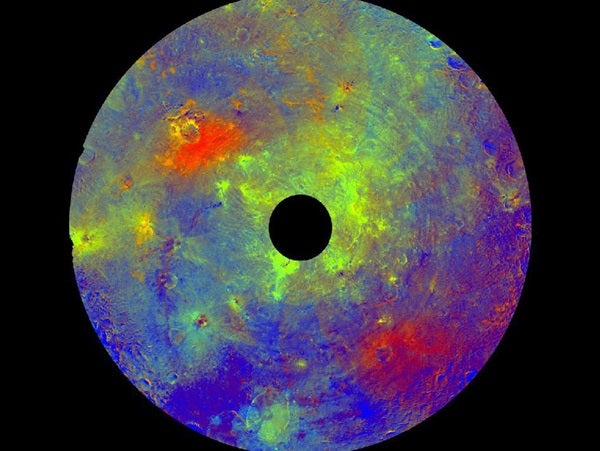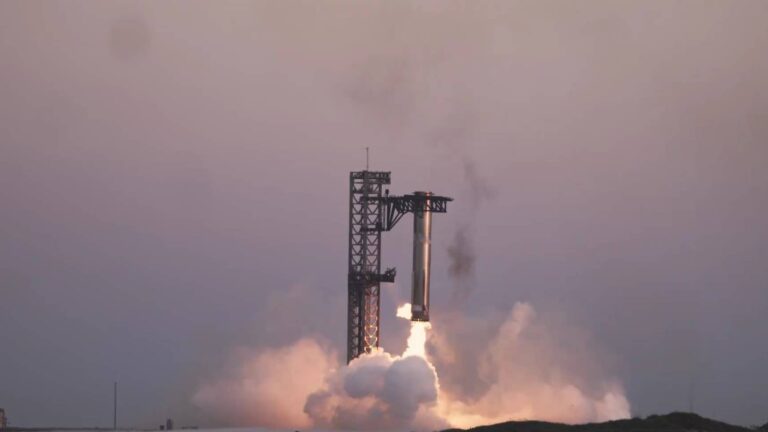In images from Dawn’s framing camera, the colors reveal differences in the rock composition associated with material ejected by impacts and geologic processes, such as slumping, that have modified the asteroid’s surface. Images from the visible and infrared mapping spectrometer reveal that the surface materials contain the iron-bearing mineral pyroxene and are a mixture of rapidly cooled surface rocks and a deeper layer that cooled more slowly. The relative amounts of the different materials mimic the topographic variations derived from stereo camera images, indicating a layered structure that has been excavated by impacts. The rugged surface of Vesta is prone to slumping of debris on steep slopes.
“Vesta’s iron core makes it special and more like terrestrial planets than a garden-variety asteroid,” said Carol Raymond from NASA’s Jet Propulsion Laboratory in Pasadena, California. “The distinct compositional variation and layering that we see at Vesta appear to derive from internal melting of the body shortly after formation, which separated Vesta into crust, mantle, and core.”
In images from Dawn’s framing camera, the colors reveal differences in the rock composition associated with material ejected by impacts and geologic processes, such as slumping, that have modified the asteroid’s surface. Images from the visible and infrared mapping spectrometer reveal that the surface materials contain the iron-bearing mineral pyroxene and are a mixture of rapidly cooled surface rocks and a deeper layer that cooled more slowly. The relative amounts of the different materials mimic the topographic variations derived from stereo camera images, indicating a layered structure that has been excavated by impacts. The rugged surface of Vesta is prone to slumping of debris on steep slopes.
“Vesta’s iron core makes it special and more like terrestrial planets than a garden-variety asteroid,” said Carol Raymond from NASA’s Jet Propulsion Laboratory in Pasadena, California. “The distinct compositional variation and layering that we see at Vesta appear to derive from internal melting of the body shortly after formation, which separated Vesta into crust, mantle, and core.”










